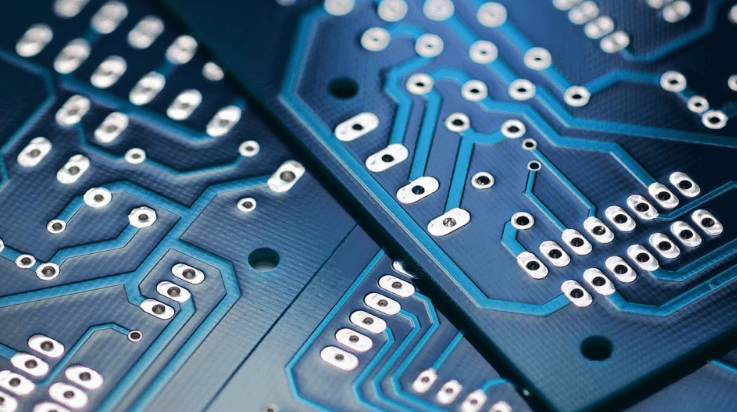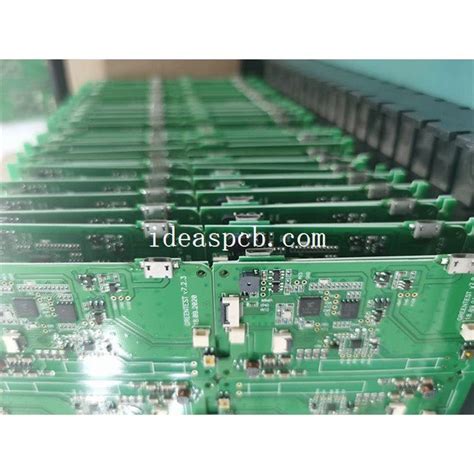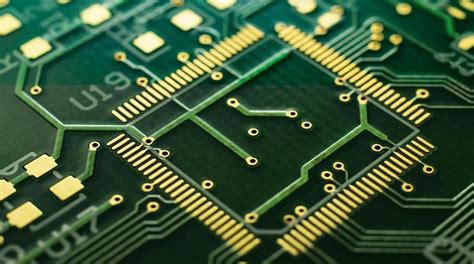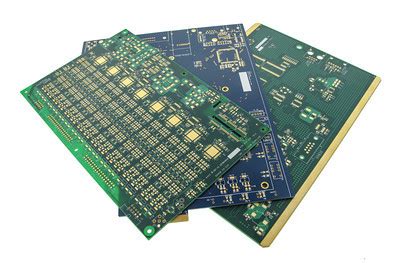Crafting Custom PCBs for Single-Project Builders

Key Takeaways
When diving into PCB manufacturing for personal projects, understanding the balance between PCB manufacturing cost and quality is crucial. While PCB manufacturing companies often cater to bulk orders, many now offer services tailored to single-board builders. You’ll find that comparing vendors for low-volume runs can save up to 30% on expenses without sacrificing reliability.
"The joy of holding a custom board you designed is unmatched—it’s where creativity meets functionality."
Here’s a quick comparison of popular PCB manufacturing business options for hobbyists:
| Vendor | Base Cost (1-5 boards) | Turnaround Time | Key Feature |
|---|---|---|---|
| Vendor A | $50 | 5 days | Free design review |
| Vendor B | $35 | 7 days | Budget-friendly |
| Vendor C | $65 | 3 days | Premium materials |
Design challenges like trace width precision or layer alignment might seem daunting, but modern tools simplify prototyping. To optimize your PCB manufacturing cost, consider panelizing designs or opting for standard finishes.
Pro Tip: Always request samples or reviews from other hobbyists before committing—this ensures your chosen PCB manufacturing companies align with your project’s needs.
Balancing affordability and quality becomes easier when you prioritize features critical to your build. For instance, if speed matters, pay a premium for faster turnaround. If experimenting, focus on cost-effective vendors to iterate freely. By mastering these nuances, you’ll unlock the full potential of PCB manufacturing for your one-off creations.

Hobbyist PCB Manufacturing Costs Explained
When creating custom boards for personal projects, understanding PCB manufacturing costs starts with recognizing key variables. Your expenses hinge on factors like board complexity, layer count, and material choices—each influencing the final price. For one-off orders, PCB manufacturing companies often charge higher per-unit rates than bulk orders, but specialized low-volume services cater specifically to hobbyists.
Design preparation plays a critical role: errors in your schematic or layout can lead to costly revisions. Many providers offer online quoting tools to estimate PCB manufacturing cost based on dimensions, copper weight, and finish type. For example, a simple two-layer board with standard FR-4 material typically costs less than $50 for a single prototype, while advanced features like impedance control or flexible substrates increase pricing.
Balancing affordability and quality requires research. Some vendors reduce PCB manufacturing business overhead by pooling multiple small orders, passing savings to you. However, cheaper options might compromise on solder mask precision or lead times. Tools like panelization can optimize space on larger production panels, effectively lowering costs without sacrificing functionality. Always verify certifications like ISO or UL to ensure reliability, even for personal builds.
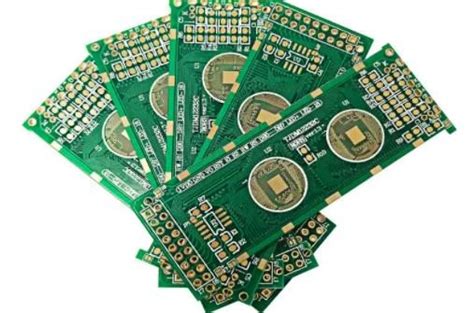
Low-Volume PCB Vendors Compared
When sourcing PCB manufacturing for single-project builds, you’ll quickly notice that not all PCB manufacturing companies prioritize the same features. Some focus on speed, others on affordability, and a few emphasize premium materials. For low-volume orders, balancing PCB manufacturing cost with quality becomes critical. Vendors like JLCPCB and PCBWay, for instance, cater to hobbyists with competitive pricing for 1-5 layer boards, while companies like OSH Park specialize in high-density designs—ideal for intricate personal projects.
Lead times vary significantly: domestic suppliers might deliver in 5-7 days but charge more, whereas overseas options offer lower rates with longer waits. You’ll also want to scrutinize tolerances—cheaper services may use standard FR-4 substrates, but advanced materials like Rogers or flexible PCBs often come at a premium. Don’t overlook certifications, either. A PCB manufacturing business with ISO 9001 compliance typically ensures tighter quality control, reducing the risk of defects in your one-off build.
To optimize your choice, weigh minimum order quantities against your needs. Some vendors require 5-10 boards even for prototypes, while others allow single-unit purchases. Ultimately, the right provider aligns with your project’s quality thresholds, budget, and timeline—key factors in turning custom designs into functional reality.
Custom Single-Board Design Challenges
Designing a PCB manufacturing-ready layout for a single-board project involves navigating unique hurdles. Unlike mass-produced boards, your design must balance technical specifications with practical constraints like limited space, component placement for manual assembly, and signal integrity in compact layouts. When working with PCB manufacturing companies, you’ll encounter strict design rule checks (DRCs) that may require multiple iterations to meet fabrication standards—especially for complex layers or unconventional shapes.
Cost optimization adds another layer of complexity. Since PCB manufacturing cost scales with board size, layer count, and material choices, you’ll need to prioritize features without over-engineering. For instance, opting for standard FR-4 substrates instead of high-frequency materials can reduce expenses, but may limit performance in RF projects. Prototype revisions also eat into budgets, making thorough pre-fab simulations critical.
Finally, aligning your vision with the realities of the PCB manufacturing business means understanding lead times and minimum order quantities. Smaller vendors might offer flexibility for one-off orders, but quality consistency varies. Clear communication about tolerances and testing requirements ensures your custom board functions as intended while avoiding costly respins. By anticipating these challenges early, you streamline the journey from schematic to tangible circuit.

DIY Electronics: Why One-Off PCBs Thrive
For hobbyists and solo builders, PCB manufacturing isn’t just about functionality—it’s a gateway to creative freedom. Unlike mass-produced boards, single-project builds let you experiment with unique layouts, specialized components, or even artistic traces that reflect your vision. Modern PCB manufacturing companies now cater specifically to low-volume orders, slashing PCB manufacturing cost barriers that once made small batches impractical. This shift empowers you to iterate designs without committing to bulk production, turning prototyping into a seamless part of the creative process.
The rise of accessible PCB manufacturing business models—like instant online quotes and design rule checks—means you no longer need corporate budgets to bring ideas to life. Whether you’re crafting a bespoke synthesizer or a custom IoT gadget, personalized hardware becomes tangible faster than ever. While quality remains critical, balancing specs with affordability becomes manageable when vendors specialize in niche orders. By focusing on precision over volume, these services ensure your one-off board performs reliably, even if it’s destined for a single project.
This democratization of PCB manufacturing aligns perfectly with the DIY ethos: turning constraints into opportunities for innovation. When every design choice is yours alone, the journey from schematic to physical board transforms into a celebration of technical artistry.
Balancing Quality in Small-Batch PCB Orders
When ordering PCB manufacturing services for small batches, you face a unique challenge: achieving professional-grade results without the economies of scale that larger orders provide. While PCB manufacturing companies often prioritize high-volume clients, many now cater to hobbyists by offering tailored solutions for one-off projects. The key lies in understanding how quality metrics—like material durability, trace precision, and solder mask integrity—affect your final product.
Start by evaluating vendors’ capabilities for low-volume runs. Some PCB manufacturing businesses specialize in prototyping, using advanced processes like laser drilling or impedance control even for single boards. However, PCB manufacturing cost can vary widely here—cheaper options might skimp on testing or use lower-grade substrates, risking functionality. Always verify if certifications like IPC-A-600 or ISO 9001 apply to small orders, as these standards help ensure consistency.
To balance cost and quality, prioritize critical features. For example, if your design requires tight tolerances, allocate more budget to precision drilling. For simpler boards, opt for standard FR-4 material to reduce expenses. Communicate openly with suppliers about your project’s needs—many will adjust their workflows to accommodate niche requirements without inflating prices. By aligning expectations and scrutinizing quotes, you can secure reliable PCB manufacturing that meets both technical and budgetary goals.
Personalized Tech Projects With Custom Boards
When designing personalized tech projects, custom boards become the backbone of your creative vision. Whether you’re building a retro gaming console or a smart home gadget, working with PCB manufacturing companies allows you to translate unique ideas into functional hardware. Unlike mass-produced boards, one-off PCB manufacturing prioritizes flexibility—you can experiment with unconventional layouts, specialty materials, or niche connectors without worrying about bulk order requirements.
However, navigating PCB manufacturing cost for single-project builds requires strategic planning. Many hobbyists balance affordability with quality by comparing vendors that specialize in low-volume PCB manufacturing business models. For instance, opting for FR-4 substrates over high-frequency laminates might save costs while still delivering reliable performance for most DIY applications.
The joy lies in seeing your schematic evolve into a tangible board—a process that blends technical precision with artistic expression. By leveraging modern PCB manufacturing tools like modular design software and rapid prototyping services, you can iterate quickly, test functionalities, and refine your project until it mirrors your original concept. This hands-on approach not only deepens your understanding of electronics but also transforms abstract ideas into devices that reflect your personal ingenuity.
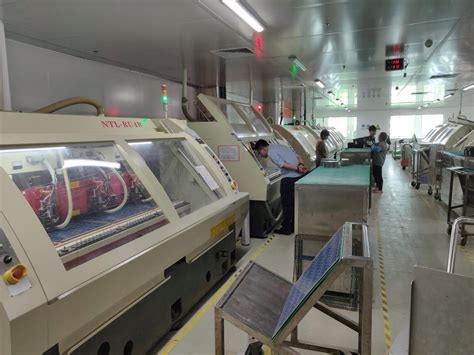
Affordable Prototyping for Solo Builders
For solo builders, accessing PCB manufacturing services that balance cost and quality can feel daunting. Fortunately, many PCB manufacturing companies now cater specifically to low-volume orders, offering pricing models that align with your project’s scale. When evaluating PCB manufacturing cost, consider factors like board complexity, material choices, and turnaround time—opting for standard FR-4 substrates and two-layer designs often keeps expenses manageable. Some vendors even provide tiered pricing, where prototyping batches under five units cost significantly less per board than traditional small-batch runs.
To further reduce expenses, leverage design tools that auto-flag potential errors, minimizing costly revisions. While PCB manufacturing business models prioritize bulk orders, platforms like JLCPCB or PCBWay now specialize in affordable one-off services without compromising reliability. Remember: iterative testing with a single prototype can save you time and resources compared to mass-producing untested designs. By aligning your requirements with these tailored solutions, you transform prototyping from a financial hurdle into a strategic step toward refining your custom electronics.
Joy of Crafting Unique PCB Designs at Home
When you create PCB manufacturing projects in your workspace, the process becomes more than technical execution—it’s an artistic expression of your vision. Unlike standardized solutions from PCB manufacturing companies, designing at home lets you experiment with unconventional layouts, integrate personal branding, or tailor circuits for niche applications. While PCB manufacturing cost often drives commercial decisions, hobbyists prioritize creative freedom over economies of scale, embracing imperfections as learning milestones.
Transitioning from schematic sketches to physical boards reveals the delicate balance between precision and imagination. Tools like affordable desktop etching kits or modular CNC mills democratize access, though mastering them requires patience. You’ll navigate challenges like trace width optimization or solder mask alignment—tasks that PCB manufacturing business professionals automate but that deepen your understanding of electronics fundamentals.
The satisfaction lies in holding a tangible representation of your problem-solving journey. Whether retrofitting vintage gadgets or prototyping IoT concepts, each board becomes a functional artifact of persistence. As you refine techniques, you’ll appreciate how small-batch PCB manufacturing bridges industrial rigor with DIY ingenuity, empowering you to iterate without outsourcing dependencies. This hands-on approach not only sharpens technical skills but also reconnects you to the tactile joy of building something uniquely yours.
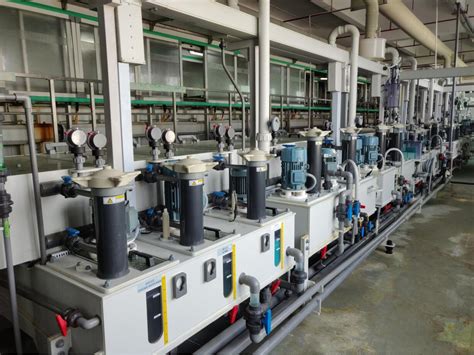
Conclusion
When navigating the world of PCB manufacturing for personal projects, the balance between PCB manufacturing cost and quality becomes paramount. While PCB manufacturing companies often cater to large-scale orders, many now recognize the growing demand from solo builders and hobbyists. By leveraging specialized services tailored for low-volume production, you can achieve professional-grade boards without compromising your budget.
The rise of accessible PCB manufacturing business models has democratized prototyping, allowing you to experiment with custom designs while minimizing financial risk. Precision in design files and attention to material specifications ensure your one-off board meets expectations, even in small batches. Though challenges like lead times or minimum order quantities may arise, partnering with vendors that prioritize flexibility can turn these hurdles into manageable steps.
Ultimately, the satisfaction of holding a tangible, functional PCB—crafted uniquely for your project—validates the effort. As the industry evolves, the barriers between professional PCB manufacturing and DIY innovation continue to dissolve, empowering you to bring even the most niche ideas to life.
Frequently Asked Questions
How do PCB manufacturing costs differ for single-board projects?
When ordering one-off boards, fixed setup fees often dominate PCB manufacturing cost structures. Many PCB manufacturing companies offer scaled pricing models where per-unit costs decrease with quantity, but you’ll pay proportionally more for prototyping runs.
Can hobbyists access professional-grade PCB manufacturing services?
Absolutely. While traditional PCB manufacturing business models focused on bulk orders, modern vendors cater to makers with affordable prototyping options. Look for services offering 2-4 layer boards with 24-hour turnaround capabilities.
What design mistakes increase PCB manufacturing expenses?
Overlooking design-for-manufacturing (DFM) guidelines often leads to rejected prototypes. Complex board shapes or ultra-tight tolerances might require special tooling, increasing your PCB manufacturing cost.
How do I balance quality and budget in small batches?
Prioritize critical circuit functions when choosing materials. Some PCB manufacturing companies let you select cheaper FR-4 substrates while paying extra for ENIG coating only on contact points.
Are there hidden costs in one-off PCB manufacturing?
Watch for tooling charges masked as "setup fees" and shipping costs for expedited services. Reputable vendors typically list all PCB manufacturing business expenses upfront in their quoting tools.
Ready to Start Your Custom PCB Journey?
Explore tailored PCB manufacturing solutions for personal projects at Andwin PCB. Click here to receive instant quotes and design support specifically optimized for single-board creators.



